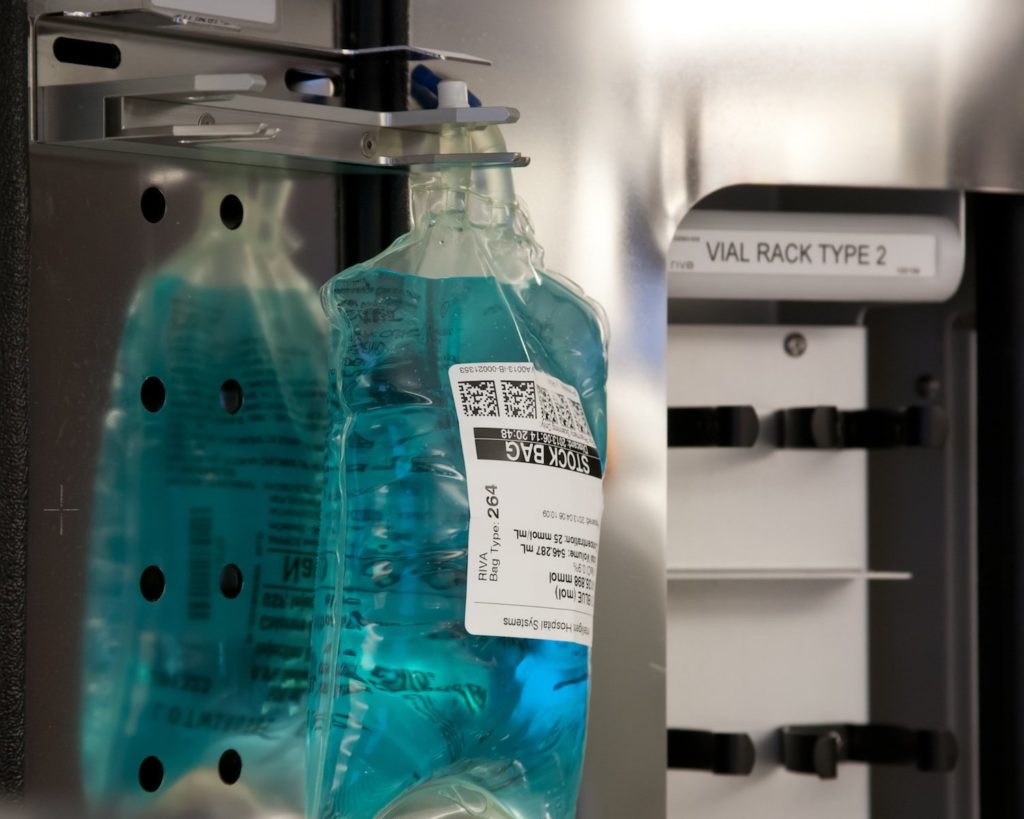38 apply labels in r
expss: Tables with Labels in R - GitHub Pages The usual way to connect numeric data to labels in R is factor variables. However, factors miss important features which the value labels provide. Factors only allow for integers to be mapped to a text label, these integers have to be a count starting at 1 and every value need to be labelled. Add value labels to variables - GitHub Pages if labels is a vector and x is a data frame, labels will be applied to each column of x. Use labels = "" to remove labels-attribute from x. force.labels Logical; if TRUE, all labels are added as value label attribute, even if x has less unique values then length of labels or if x has a smaller range then length of labels. See 'Examples'.
Label Encoding in R programming - JournalDev Practical Implementation of a Label Encoder in R To begin with, R provides us with ' superml ' library that contains the below set of functions to apply Label Encoder to our data. LabelEncoder$new (): This function creates and initializes an instance of the Label Encoder class.

Apply labels in r
Variable and value labels support in base R and other packages The usual way to connect numeric data to labels in R is factor variables. However, factors miss important features which the value labels provide. Factors only allow for integers to be mapped to a text label, these integers have to be a count starting at 1 and every value need to be labelled. Change Labels of GGPLOT2 Facet Plot in R - GeeksforGeeks Now let us explore different approaches to change the labels. Method 1: Combine Label Variable with Facet Labels . If we want to combine Label Variable (LBLs) to Facet Labels (Values of LBLs), then for that we simply have to use labeller parameter of facet_grid() and set label_both to its value. Example 1: LabelEncoder Example - Data Analytics In this section, you will see the code example related to how to use LabelEncoder to encode single or multiple columns. LabelEncoder encodes labels by assigning them numbers. Thus, if the feature is color with values such as ['white', 'red', 'black', 'blue']., using LabelEncoder may encode color string label as [0, 1, 2, 3].
Apply labels in r. label function - RDocumentation label can optionally append a "units" attribute to the string, and it can optionally return a string or expression (for R 's plotmath facility) suitable for plotting. labelPlotmath is a function that also has this function, when the input arguments are the 'label' and 'units' rather than a vector having those attributes. How to apply manually created x-axis labels in a histogram ... Therefore, firstly we need to create the histogram by ignoring the labels and then axis function can be used for new values. Consider the below vector x and create a histogram of x by ignoring x-axis labels − Example set.seed(1999) x<-rnorm(5000,9,1) hist(x,xaxt='n') Output Now adding new values for x-axis labels − Example Display All X-Axis Labels of Barplot in R (2 Examples) Example 1: Show All Barchart Axis Labels of Base R Plot. Example 1 explains how to display all barchart labels in a Base R plot. There are basically two major tricks, when we want to show all axis labels: We can change the angle of our axis labels using the las argument. We can decrease the font size of the axis labels using the cex.names argument. Encoding Data with R - Pluralsight In this technique, one-hot (dummy) encoding is applied to the features, creating a binary column for each category level and returning a sparse matrix. In each dummy variable, the label "1" will represent the existence of the level in the variable, while the label "0" will represent its non-existence.
Quick-R: Value Labels You can use the factor function to create your own value labels. # variable v1 is coded 1, 2 or 3. # we want to attach value labels 1=red, 2=blue, 3=green. mydata$v1 <- factor (mydata$v1, levels = c (1,2,3), labels = c ("red", "blue", "green")) # variable y is coded 1, 3 or 5. R and labelled data: Using quasiquotation to add variable ... set_labels() can be used to add value labels to variables. The syntax of this function is easy to use, and set_labels() allows to add value labels to multiple variables at once, if these variables share the same value labels. In the following examples, we will use the frq() dataframe - Stack Overflow My original answer used lapply, which isn't actually necessary. Here's the original answer for archival purposes: You can assign the labels using lapply: label (data) = lapply (names (data), function (x) var.labels [match (x, names (var.labels))]) lapply applies a function to each element of a list or vector. apply in R - R CODER In this tutorial you will learn how to use apply in R through several examples and use cases. 1 apply () function in R 1.1 Applying a function to each row 1.2 Applying a function to each column 2 Apply any function to all R data frame 3 Additional arguments of the apply R function 4 Applying a custom function
apply(), lapply(), sapply(), tapply() Function in R with ... The apply in R function can be feed with many functions to perform redundant application on a collection of object (data frame, list, vector, etc.). The purpose of apply () is primarily to avoid explicit uses of loop constructs. They can be used for an input list, matrix or array and apply a function. Any function can be passed into apply (). Histogram in R - EDUCBA Changing x and y labels to a range of values xlim and ylim arguments are added to the function. Example: hist (Air Passengers, xlim=c (150,600), ylim=c (0,35)) In the above example x limit varies from 150 to 600 and Y - 0 to 35. // Adding breaks hist (AirPassengers, main="Histogram with more Arg", xlab="Name List", border="Green", col="Orange", Add X & Y Axis Labels to ggplot2 Plot in R (Example) Example: Adding Axis Labels to ggplot2 Plot in R. If we want to modify the labels of the X and Y axes of our ggplot2 graphic, we can use the xlab and ylab functions. We simply have to specify within these two functions the two axis title labels we want to use: ggp + # Modify axis labels xlab ("User-Defined X-Label") + ylab ("User-Defined Y-Label") 5.11 Labeling Points in a Scatter Plot - R Graphics 5.11.3 Discussion. Using geom_text_repel or geom_label_repel is the easiest way to have nicely-placed labels on a plot. It makes automatic (and random) decisions about label placement, so if exact control over where each label is placed, you should use annotate() or geom_text().. The automatic method for placing annotations using geom_text() centers each annotation on the x and y coordinates.
apply_labels : Set variable labels/value labels on ... apply_labels tries automatically detect what is variable label and what are value labels. See also var_lab and val_lab. apply_labels: Set variable labels/value labels on variables in the... in expss: Tables, Labels and Some Useful Functions from Spreadsheets and 'SPSS' Statistics
Bar Charts in R - EDUCBA cnt. x. barplot (cnt , space =1.0) Creating a Bar chart using R built-in data set with a Horizontal bar. To do so, make horiz = TRUE or else vertical bars are drawn when horiz= FALSE (default option). We shall consider a R data set as: Rural Male Rural Female Urban Male Urban Female. ## 50-54 11.7 8.7 15.4 8.4.
Factors in R | Applied R Code Categorical (e.g. qualitative) data are represented as factors in R. Factors display as character strings (e.g. labels), but are stored as integers (e.g. levels). Creating Factors in R. Factors may be created by using the factor() or as.factor() function:
Tables with labels in R We can save labelled dataset as *.csv file with accompanying R code for labelling. write_labelled_csv (w, file filename = "product_test.csv") Or, we can save dataset as *.csv file with SPSS syntax to read data and apply labels. write_labelled_spss (w, file filename = "product_test.csv")
How to Label Points on a Scatterplot in R (With Examples) Example 1: Label Scatterplot Points in Base R. To add labels to scatterplot points in base R you can use the text () function, which uses the following syntax: text (x, y, labels, …) x: The x-coordinate of the labels. y: The y-coordinate of the labels. labels: The text to use for the labels. The following code shows how to label a single ...
Change Axis Labels of Boxplot in R - GeeksforGeeks Adding axis labels for Boxplot will help the readability of the boxplot. In this article, we will discuss how to change the axis labels of boxplot in R Programming Language. Method 1: Using Base R. Boxplots are created in R Programming Language by using the boxplot() function. Syntax: boxplot(x, data, notch, varwidth, names, main) Parameters:
Apply Function With Multiple Arguments in R - Delft Stack We can also apply a function directly to a list or vector with one or multiple arguments. In this tutorial we will work with the following vectors and function: R. r Copy. f1 <- function(v1,v2){ v1+v2 } vec1 <- c(1,5,9) vec2 <- c(2,7,6) The function is relatively simple, it just adds two elements and we have two vectors with three elements each.
How to Assign Variable Labels in R - Scripts & Statistics Assigning labels to variables. Second, we assign the variable labels to the variables of the mtcars data frame: library(sjlabelled) mtcars <- set_label(mtcars, label = labs) When we have a look at the mtcars data frame using RStudio's data viewer, we find the variable labels placed right underneath the variable names:




.JPG)
Post a Comment for "38 apply labels in r"